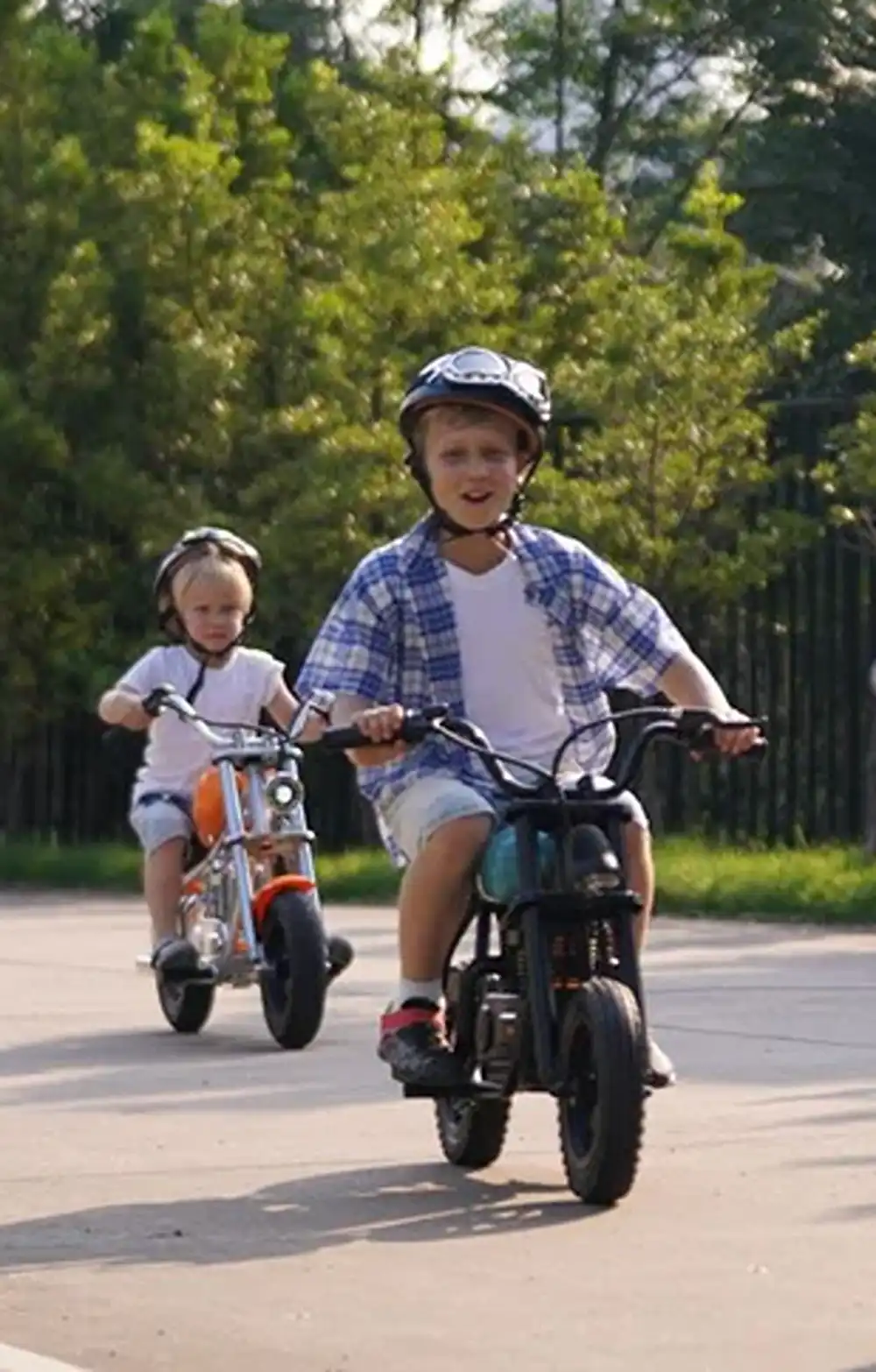HYPER GOGO Mini Electric Motorcycles: Safe & Fun for Kids
The HYPER GOGO mini electric motorcycles have become a popular choice among families seeking a fun, safe, and eco-friendly way for their children to enjoy outdoor adventures. Designed with young riders in mind, these electric motorcycles offer a blend of performance, safety features, and interactive elements.
Unique touches like customizable designs and speed limit controls make them stand out in the market. They deliver a truly immersive riding experience that kids absolutely love.
Models Tailored for Young Riders
HYPER GOGO mini electric motorcycles offers several models to cater to different age groups and preferences:
- Cruiser 12 Plus: This model features a chopper-style design with vibrant colors and LED lights. It comes equipped with a 160W motor, a 21.9V 5.2Ah lithium-ion battery, and three adjustable speed settings (up to 10 mph). Additional features include Bluetooth connectivity, simulated exhaust fog effects, and an optional app for parental control and customization. (com offers essential advice for choosing safe ride‑on toys for young children)
- Challenger 12 Plus: Designed for those seeking a sleek, modern look, the Challenger 12 Plus offers similar specifications to the Cruiser 12 Plus but with a more contemporary design. It also includes features like pneumatic tires for a smoother ride and a durable frame suitable for various terrains.
- Pioneer 12 Plus: Combining vintage aesthetics with modern technology, the Pioneer 12 Plus offers a comfortable ride with ergonomic seating and easy-to-use controls. It maintains the same performance features as the other models, ensuring a safe and enjoyable experience for young riders.
Safety Features for Peace of Mind
Safety is a top priority for HYPER GOGO, and their mini electric motorcycles are equipped with several features to ensure a secure riding experience:
- Adjustable Speed Settings: Parents can set the maximum speed to match their child’s skill level, allowing for a gradual increase in speed as confidence grows. This feature helps in managing the learning curve and ensures safety during the initial riding stages.
- Training Wheels: Some models come with optional training wheels to provide added stability for beginners, helping them balance and ride with ease.
- Responsive Braking System: The motorcycles are equipped with reliable brakes, ensuring quick and safe stops when needed.
- Parental Control App: Certain models offer a mobile app that allows parents to monitor and control the motorcycle remotely, including speed adjustments and emergency stop functions.
Performance and Battery Life
The HYPER GOGO mini electric motorcycles are powered by high-quality lithium-ion batteries, offering impressive performance:
- Battery Capacity: Most models feature a 21.9V 5.2Ah battery, providing a balance between power and longevity.
- Range: Depending on the model and riding conditions, these motorcycles can travel up to 12 kilometers (approximately 7.5 miles) on a single charge.
- Charging Time: The batteries typically require 2 to 4 hours to fully charge, ensuring minimal downtime between rides.
- Speed: Riders can enjoy speeds up to 10 mph, suitable for both beginners and more experienced young riders. (com: Best toys for 2‑ and 3‑year‑olds—why ride‑on toys matter for this age group)
Interactive Features for Enhanced Fun
To make the riding experience even more engaging, HYPER GOGO incorporates several interactive features:
- Bluetooth Connectivity: Some models allow riders to connect their devices via Bluetooth, enabling them to play their favorite music through the motorcycle’s built-in speakers.
- LED Lighting: Vibrant LED lights enhance visibility and add a cool factor, especially during evening rides.
- Simulated Exhaust Effects: Certain models include misting effects from the exhaust, adding a realistic touch to the riding experience.
Easy Assembly and Maintenance
Setting up a HYPER GOGO mini electric motorcycle is straightforward:
- Assembly: Most models come with easy-to-follow instructions and require minimal assembly, allowing kids to get riding quickly.
- Maintenance: The motorcycles are built with durable materials, requiring little maintenance. Regular checks on tire pressure and battery levels are recommended to ensure optimal performance.
- Customer Support: HYPER GOGO offers responsive customer service to assist with any questions or issues that may arise.
A Perfect Gift for Young Adventurers
Whether it’s a birthday, holiday, or special occasion, a HYPER GOGO mini electric motorcycle makes an excellent gift for children. It combines fun, learning, and physical activity, encouraging kids to spend more time outdoors and develop motor skills. With various models to choose from, parents can select the one that best fits their child’s age, interests, and skill level.
Final Thoughts
The HYPER GOGO mini electric motorcycles offer a unique blend of safety, style, and performance, making them a top choice for young riders. With features designed to enhance the riding experience and promote outdoor activity, these motorcycles provide more than just a ride—they offer an adventure. If you’re looking to introduce your child to the world of electric motorcycles, HYPER GOGO provides a range of options to suit different preferences and needs.










